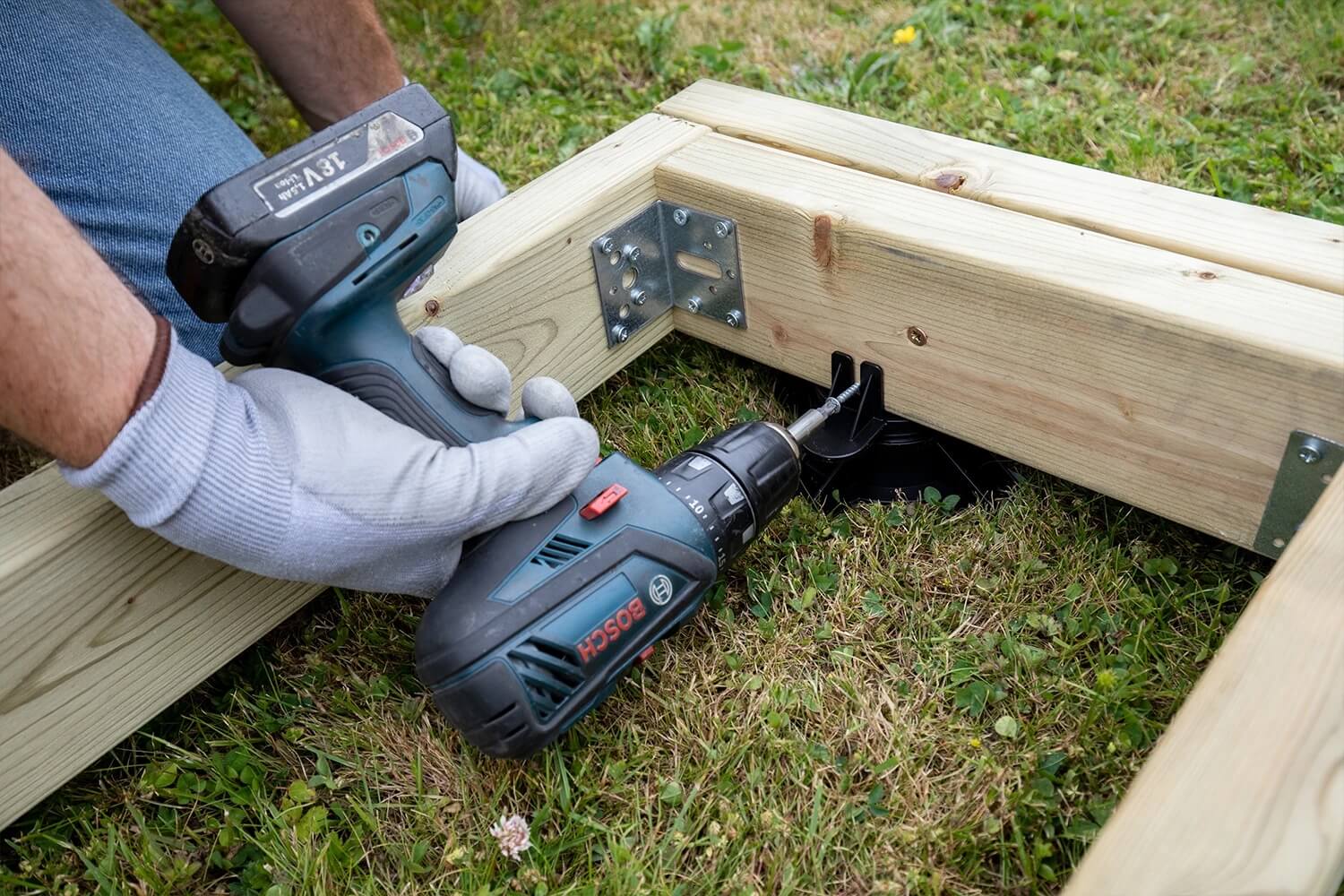Posts which are to be set into concrete should be pressure treated to use class 4 which protects timber when in ground contact. In addition to the extra preservative treatment, it also helps to give any timber which will be in constant ground contact a couple of coats with bitumen paint. The bitumen paint prevents moisture ingress into the timber which helps improve the longevity of the posts.
Components and fixings for building a deck sub frame

When designing and building a timber deck it is vital to consider the strength and longevity of the components and fixings of the sub frame. Sub frames are generally built onto a hard standing such as concrete or tarmacadam, onto pillars constructed from brick or block, or attached to posts which are set into concrete filled holes.
Posts
Joists and beams
Joists be of a size appropriate for the distance being spanned (usually 150mm x 50mm) and strength graded accordingly. Advice on span distances and strength grading can be found through the Timber Decking and Cladding Association (TDCA). Again, if the jousts are coming into contact with the ground or resting on concrete pillars it would be worth sourcing use class 4 treated timber, and painting contact areas with bitumen paint.
Cutting and fixing
You should always avoid fixing any load bearing timbers through the end grain as this provides the weakest fixing point for screws. Instead, use joist hangers to fix joists to main beams, fix joists directly to the top of the main beams so the load is passed directly from joist to beam. Any cut ends should be treated with an appropriate end grain preserver, as should any drill holes or notching. This protects the integrity of the preservative treatment. It is advisable but not essential to use end grain preserver from the same manufacturer as the original preservative treatment. All fixings should be suitable for outdoor use and for the purpose you are intending. Galvanised coach bolts are ideal for fixing beams to posts, and stainless steel screws are ideal for fixing joists and noggins. Always ensure the fixings are long enough and of appropriate thickness and strength. The fixing supplier should be able to offer advice size and strength of fixings.
Get in touch
If you have any questions or would like more information, get in touch with one of our friendly team.